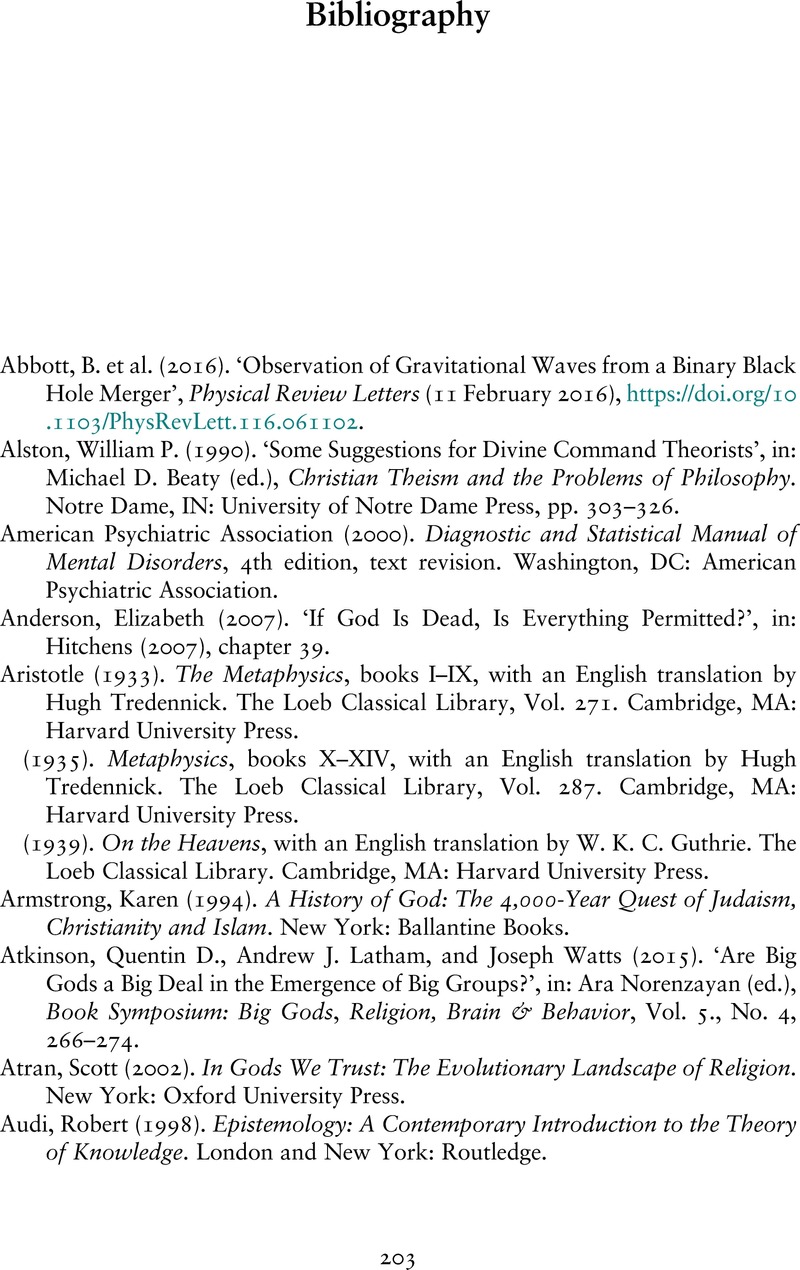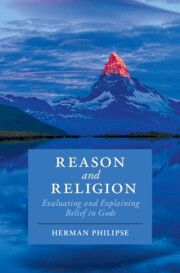Book contents
- Reason and Religion
- Cambridge Studies in Religion, Philosophy, and Society
- Reason and Religion
- Copyright page
- Contents
- Acknowledgements
- Introduction
- Part I The Reasonableness of Religious Beliefs
- Part II The Evolution of Religion and Ethics
- Part III Apologetic Strategies Evaluated
- Conclusion
- Bibliography
- Index
- References
Bibliography
Published online by Cambridge University Press: 21 April 2022
- Reason and Religion
- Cambridge Studies in Religion, Philosophy, and Society
- Reason and Religion
- Copyright page
- Contents
- Acknowledgements
- Introduction
- Part I The Reasonableness of Religious Beliefs
- Part II The Evolution of Religion and Ethics
- Part III Apologetic Strategies Evaluated
- Conclusion
- Bibliography
- Index
- References
Summary

- Type
- Chapter
- Information
- Reason and ReligionEvaluating and Explaining Belief in Gods, pp. 203 - 214Publisher: Cambridge University PressPrint publication year: 2022

